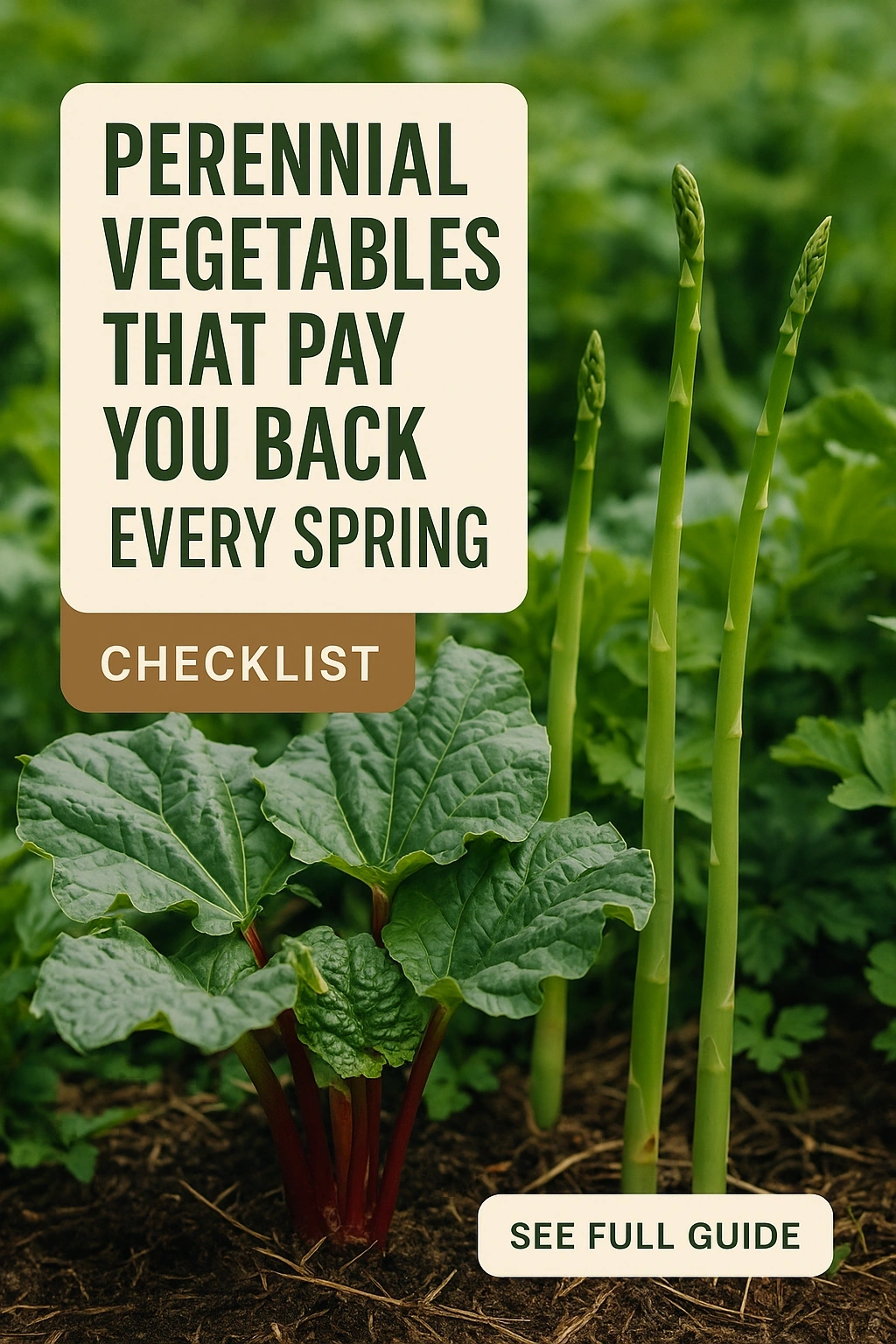
If you are looking to cultivate a garden that offers bountiful returns year after year, perennial vegetables are an excellent choice. These hardy plants not only provide nutritious harvests but also save you time and resources. Unlike annual vegetables, which require replanting each season, perennials establish themselves and regrow each spring, allowing you to enjoy fresh produce with less effort. This article explores various perennial vegetables that will enrich your garden and your plate, offering practical tips for successful cultivation.
Why Choose Perennial Vegetables?
The choice to grow perennial vegetables can transform your gardening experience. These plants have several advantages, making them an appealing option for both novice and experienced gardeners.
Benefits of Perennial Vegetables
- Low Maintenance: Once established, perennial vegetables require less care than annuals. They often need fewer resources, such as water and fertilizer.
- Soil Health: Perennials improve soil structure and fertility by maintaining root systems year-round, which helps prevent erosion.
- Flavor and Nutrition: Many perennial vegetables boast enhanced flavors and nutritional profiles, adding variety to your diet.
- Cost-Effective: Although the initial investment might be higher, the long-term yields of perennial vegetables can save you money over time.
Top Perennial Vegetables to Grow
When selecting perennial vegetables, consider those that thrive in your climate and soil conditions. Below are some of the most popular and productive options to consider for your garden.
Asparagus
Asparagus is a classic perennial vegetable that can produce for up to 20 years. This nutrient-rich plant is a springtime favorite, known for its tender spears. Asparagus thrives in well-drained soil and requires a sunny location to flourish. After planting, you should avoid harvesting for the first two years to allow the plants to establish strong roots.
Rhubarb
Rhubarb is another excellent perennial choice, valued for its tart stalks commonly used in desserts and jams. This hardy plant grows well in colder climates. Rhubarb prefers rich, well-drained soil and partial shade. It’s essential to harvest the stalks properly, leaving a few to ensure healthy growth for the following year.
Artichoke
Globe artichokes are not only visually stunning but also delicious. These perennials produce edible buds that can be harvested in late spring. Artichokes thrive in well-drained soil and full sunlight. They may require some winter protection in colder regions, but with proper care, they can yield for several years.
Jerusalem Artichoke
Unlike the globe variety, Jerusalem artichokes are tubers that grow underground. These plants are incredibly resilient and can thrive in various soil types. They produce beautiful yellow flowers in late summer and can be harvested in the fall. Jerusalem artichokes are a great source of inulin, a prebiotic fiber that supports gut health.
Perennial Kale
Perennial kale, or tree kale, is a versatile and hardy plant that can produce greens for years. It can withstand frost and continues to produce throughout the growing season. Perennial kale prefers a sunny position and well-drained soil. Regular harvesting encourages new growth, making it a fantastic choice for continuous greens.
Growing and Caring for Perennial Vegetables
To successfully cultivate perennial vegetables, understanding their specific growing requirements is crucial. Each type of vegetable has its unique needs regarding sunlight, water, and soil conditions.
Soil Preparation
Before planting, it is essential to prepare the soil adequately. Most perennial vegetables prefer well-drained, fertile soil enriched with organic matter. Testing the soil pH can also help determine if amendments are necessary to create optimal growing conditions.
Watering and Maintenance
While perennial vegetables are generally hardy, they still require consistent watering during their establishment phase. Once established, most perennials are drought-tolerant. Regular weeding and mulching can help retain moisture and suppress weeds, ensuring healthy growth.
Fertilization
Perennial vegetables benefit from organic fertilizers, such as compost or well-rotted manure. Applying these amendments in early spring can provide the necessary nutrients for robust growth. However, be cautious not to over-fertilize, as this can lead to excessive foliage with less fruit production.
Harvesting Your Perennial Vegetables
Knowing when and how to harvest your perennial vegetables is vital for maximizing their yield and ensuring the best flavor.
Timing Your Harvest
Most perennial vegetables have specific harvest times. Asparagus is best harvested when the spears are around 6-8 inches tall. Rhubarb stalks should be picked when they are thick and firm, typically in late spring. Understanding the right time to harvest will enhance the quality of your produce.
Harvesting Techniques
Utilizing proper harvesting techniques can help prolong the life of your plants. For instance, when picking asparagus, snap the stalks at the base rather than cutting them, which encourages new growth. Similarly, when harvesting rhubarb, twist and pull the stalks gently to avoid damaging the plant.
FAQs
What are the best perennial vegetables for beginners?
Asparagus, rhubarb, and perennial kale are excellent choices for novice gardeners. They are relatively easy to grow and require minimal maintenance once established.
How long do perennial vegetables last?
Most perennial vegetables can last anywhere from 5 to 20 years with proper care. The longevity depends on the specific type and the growing conditions provided.
Can perennial vegetables grow in containers?
Yes, many perennial vegetables can thrive in containers. However, ensure that the container is large enough to accommodate root growth and has adequate drainage.
Do perennial vegetables need winter protection?
Some perennial vegetables, like artichokes, may require winter protection in colder climates. Mulching can help insulate the roots and protect them from freezing temperatures.
How do I propagate perennial vegetables?
Many perennial vegetables can be propagated through division. This involves carefully separating the root clumps and replanting them to create new plants.
Conclusion
Incorporating perennial vegetables into your garden can lead to sustainable, rewarding harvests for years to come. With proper care and attention, these resilient plants will not only enhance your culinary experiences but also contribute to a more eco-friendly gardening practice. Begin your journey with perennial vegetables today, and enjoy the fruits of your labor with less effort each spring.
